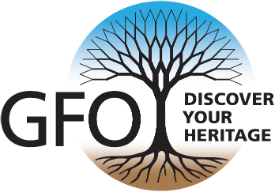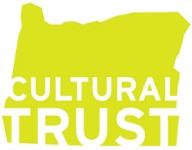Researching U.S. Passenger Lists
Passenger lists are an important source for information about our immigrant ancestor. They were created to keep track of people on the move and have been made for all ships that came to America between 1565 and 1954. They were compiled at the port of embarkation, at ports of call along the route, at the port of arrival, in newspapers at the port of departure, and in newspapers at cities of arrival. Some were required by law, others are private recordings.
Overview of the Time Periods of Passenger Arrival Records
Prior to 1820, lists were made, but they were not turned in to the government. Individuals, societies, and companies are ferreting out and collecting the pre-1820 lists or reconstructing them from other available records.
A law passed by the US Congress in 1820 required passenger lists generated at US ports to be turned in to the government for the purposes of recording immigration into the United States. From 1820 to 1883, Customs Passenger lists were collected and preserved. They give limited information about the immigrant, but they do include the following:
- Name of Ship
- Name of Ship's Master
- Date the Ship arrived in the Port
- Name of Passenger, age, sex, occupation, nationality, and country they intend to reside in.
Immigration Passenger Lists, beginning in 1883, are more detailed. They include all of the above, plus information about the passenger's last residence, place of birth, closest living relative in his or her native country, a physical description, and other bits of information.
What You Need to Start Your Search
To begin, you need the following information on your ancestor: full original name; approximate age at arrival; and approximate date of arrival. Read a guidebook to passenger lists. This will explain what is available and where you will find it. The following guides are found in the Forum library.
- Colletta, John P. They Came in Ships: a Guide to Finding Your Immigrant Ancestor's Arrival Record. Salt Lake City, UT: Ancestry, Inc., 1989.
- Eakle, Arlene. “Tracking Immigrant Origins.” The Source: A Guidebook of American Genealogy, Chapter 15. Salt Lake City, UT: Ancestry Publishing, 1984.
- Tepper, Michael H. American Passenger Arrival Records: A Guide to the Records of Immigrants Arriving at American Ports by Sail and Steam. Baltimore, MD: Genealogical Publishing Co., 1988.
Books in the Forum Library, pre-1820
Passenger lists prior to 1820 were not collected in a central repository. Many were destroyed or tucked away in archives, museums, courthouses, etc. A large number have been published. Others have been reconstructed from miscellaneous sources.
1. The first reference you should use is P. William Filby's Passenger and Immigration Lists Bibliography. It is a guide to the published arrival records of over two million immigrants. The three volumes, and the nineteen supplement volumes, all need to be checked. The citation to the list with your ancestor's name may be in one of the books. The Lists refer you to a published source, either in a book or a periodical. The Forum does not have all the sources. If the one you want is not on the shelves, the Family History Library may have the book you need. Go to a local Family History Center and check their catalog.
- Filby, P. William. Passenger and Immigration Lists Bibliography 1538-1900, A Guide to Published Lists of Arrivals in the US & Canada. Detroit, MI: Gale Research Co., 1981.
2. An important collection of immigration source materials is Strassburger and Hinke's Pennsylvania German Pioneers. Approximately 38,000 German and Swiss immigrants are found in the volumes. The original passenger lists are housed at the Pennsylvania State Archives in Harrisburg.
- Strassburger, Ralph B. Pennsylvania German Pioneers: A Publication of the Original Lists of Arrivals in the Port of Philadelphia from 1727 to 1808. 3 vols. Baltimore, MD: Genealogical Publishing Company, 1966.
3. Virginia had an interesting system of headrights. This was the "right" to claim fifty acres for every "head" arriving in the colony. Most headrights were claimed by the person who paid the passage of an immigrant. Many of these are included in the three volumes of Cavaliers and Pioneers. The abstracts were continued in issues of the periodical The Magazine of Virginia Genealogy.
- Nugent, Nell Marion. Cavaliers and Pioneers; Abstracts of Virginia Land Patents. Three Volumes. Richmond, VA: Virginia State Library, 1979.
- The Magazine of Virginia Genealogy. Richmond, VA: Virginia Genealogical Society.
Passenger Lists from 1820-1954
Starting in 1820, all ship passenger lists had to be preserved. Most are now in the custody of the National Archives and are available on microfilm through the Family History Library. Many of the port lists are indexed. There is a great gap in the index for the Port of New York. It is not indexed from 1846 to 1897. The definitive manuals for the lists and indexes are:
- Guide to Genealogical Research in the National Archives. Washington, DC: National Archives and Records Service, 1982.
- Immigrant and Passenger Arrivals: A Select Catalog of National Archives Microfilm Publications.Washington, DC: NATF, 1983.
Searching in Unindexed Years
An incredible number of our ancestors arrived in the United States through the Port of New York in the unindexed years, 1846-1897. There are ways of locating them; it just takes time, patience, and ingenuity. For instance, if the name of the ship is known, consult the Morton-Allan Directory of Passenger Steamship Arrivals at the Port of New York, 1890-1930, and at the Ports of Baltimore, Boston, and Philadelphia, 1904-1926. It will give you the days that the ship docked. The microfilm reels containing those days can be ordered from the Family History Library.
lists have been published; these provide indexes. This includes those in the series, Germans to America, and Filby's Passenger and Immigration List Indexes.
- Filby, P. William & Mary K. Meyer. Passenger and Immigration Lists Index. Detroit, MI: Gale Research Co., 1980+.
- Glazier, Ira A., ed. The Famine Immigrants 1846-1851. Seven volumes. Baltimore, MD: Genealogical Publishing Co., 1983-1986.
- Glazier, Ira A., ed. Germans to America: Lists of Passengers Arriving at US Ports, Jan 1850 - 1883.Wilmington, DE, Scholarly Resources, 1990.
- Morton-Allan Directory of European Passenger Steamship Arrivals at the Port of New York, 1890-1930, and at the Ports of Baltimore, Boston, and Philadelphia, 1904-1926. New York, NY: Immigration Information Bureau, 1931.
- Swierenga, Robert P. Dutch Immigrants in US Ship Passenger Manifests, 1820-1888. Wilmington, DE: Scholarly Resources, 1983.
Emigration Lists
Several emigration lists were compiled in the old country. The lists for the Port of Hamburg have been microfilmed and are available through the FamilySearch Library.
For other emigration lists, check the FamilySearch Library Catalog. Look for the country of origin and then "Emigration and Immigration."
Bonus
If your ancestor was naturalized after September 1906, his naturalization file will give the name of the ship. Write a letter to the Freedom of Information Officer, Immigration and Naturalization Service, and request a copy of the naturalization file. Include birth date, country of origin, place of residence, date of naturalization, and court of naturalization. If you do not know the date and court of naturalization, and if your ancestor resided in Multnomah County, you can check the Multnomah County Foreign Born Voter Registrations to learn this. The films are in the Oregon section of the microfilm cabinet.
Address your letter to:
FOIA Officer, USCIS
511 NW Broadway
Portland, OR 97209
Ship Photo
A photo of the ship that Grandma or Grandpa sailed on is an exciting addition to the family history. When you learn the name of the ship and the sailing date, you can look for that photo. A book in the library with many photos and descriptions is:
- Anuta, Michael J. Ships of Our Ancestors. Baltimore, MD, Genealogical Publishing Co., 1983.
Or, you can order a photo from:
Peabody Essex Museum
East India Square
Salem, MA 01970-3783




